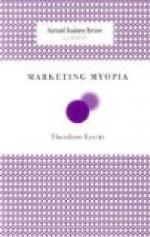If at any time during fermentation we pour off the fermenting liquid, the deposit of yeast remaining in the vessel may continue there, in contact with air, without our ever being able to discover the least formation of penicillium glaucum in it. We may keep a current of pure air constantly passing through the flask; the experiment will give the same result. Nevertheless, this is a medium peculiarly adapted to the development of this mould, inasmuch as if we were to introduce merely a few spores of penicillium an abundant vegetation of that growth will afterwards appear on the deposit. The descriptions of Messrs. Turpin, Hoffmann, and Trecul have, therefore, been based on one of these illusions which we meet with so frequently in microscopical observations.
When we laid these facts before the Academy, [Footnote: Pasteur, Comptes rendus de l’Academie, vol. lxxviii., pp. 213-216.] M. Trecul professed his inability to comprehend them: [Footnote: Trecul, Comptes rendus de l’Academie, vol. lxxviii., pp. 217, 218.] “According to M. Pasteur,” he said, “the yeast of beer is anaerobian, that is to say, it lives in a liquid deprived of free oxygen; and to become mycoderma or penicillium it is above all things necessary that it should be placed in air, since, without this, as the name signifies, an aerobian being cannot exist. To bring about the transformation of the yeast of beer into mycoderma cerevisiae or into penicillium glaucum we must accept the conditions under which these two forms are obtained. If M. Pasteur will persist in keeping his yeast in media which are incompatible with the desired modification, it is clear that the results which he obtains must always be negative.”
Contrary to this perfectly gratuitous assertion of M. Trecul’s we do not keep our yeast in media which are calculated to prevent its transformation into penicillium. As we have just seen, the principal aim and object of our experiment was to bring this minute plant into contact with air, and under conditions that would allow the penicillium to develop with perfect freedom. We conducted our experiments exactly as Turpin and Hoffmann conducted theirs, and exactly as they stipulate that such experiments should be conducted—with the one sole difference, indispensable to the correctness of our observations, that we carefully guarded ourselves against those causes of error which they did not take the least trouble to avoid. It is possible to produce a ready entrance and escape of pure air in the case of the double-necked flasks which we have so often employed in the course of this work, without having recourse to the continuous passage of a current of air. Having made a file-mark on the thin curved neck at a distance of two or three centimetres (an inch) from the flask, we must cut round the neck at this point with a glazier’s diamond, and then remove it, taking care to cover the opening immediately with a sheef of paper which has been passed through the flame, and which we must fasten with a thread round the part of the neck still left. In this manner we may increase or prolong the fructification of fungoid growths, or the life of the aerobian ferments in our flasks.




